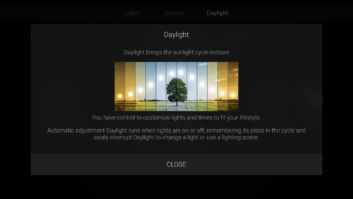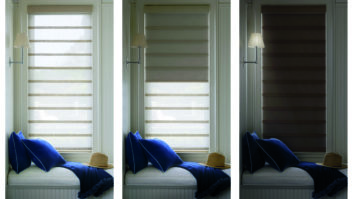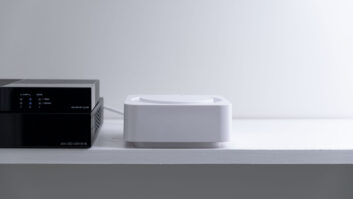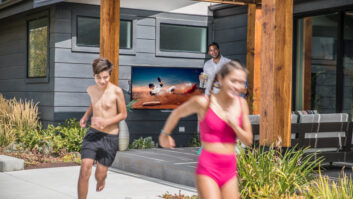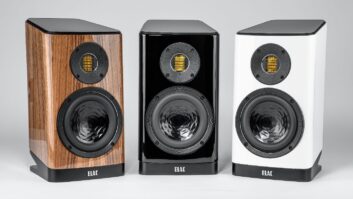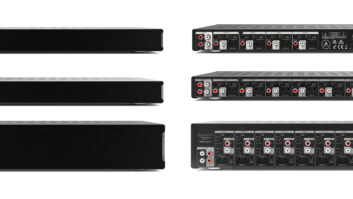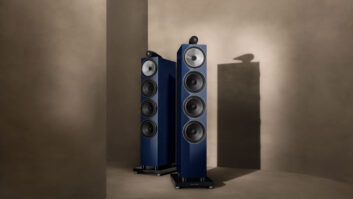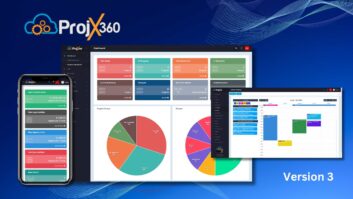Bringing you up to speed…
Earlier this year, my custom installation company – Custom Theater and Audio – landed the biggest job in our 18 year history, both in the physical size of the home (21,500 square feet under roof on one floor sitting on 4 acres of property) and in financial scope of the job. I decided to chronicle the project over the course of our design and install, detailing the decisions I made in system design, proposal process, prewire, trim out and installation.
Back in April, I posted Part 1 of this saga where I discussed The Spec Out. If you missed that, I went over my thought process on coming up with the system for this job; how I tackled the size of the job and figured out the best way to handle audio/video distribution and control as well as my choices on selecting the system components.
In May, I posted part 2, where I discussed The Setup and detailing how I presented the items I was planning on using to Rod and Sandy – the husband and wife builder team running the project. Prior to giving them the proposal, I wanted them to understand what each component was, why I selected it and how it worked. Being able to bring them into our showroom allowed me to demonstrate the Kaleidescape, Lutron and Control4 systems to them, letting them experience how the finished system would perform. Also helpful was the housewide Wi-Fi coverage map produced by Pakedge and the on-site demo my local Sonance rep firm provided of the SLS outdoor audio system.
So, up to this point, we had not really discussed budget. The only guidance I had received from the builder was that it needed to be a system fitting a home of this size and scope, the home theater needed to be really impressive, the home needed rock-solid Wi-Fi coverage and it all needed to be simple to use. He also said that a home theater in the $70-80,000 range “wouldn’t frighten” him.

In creating the proposal, I went through the home area by area, building the system that met all of these goals. Our company has tried using proposal software over the years, but ultimately we continue returning to Microsoft Excel. I know there are some terrific tools out there that can produce very professional looking proposals, but most of our clients appreciate the simplified, single-sheet, easily summarized look that we’ve come up with in Excel. When we had used proposal software in the past, it ended up with pages (and pages…) listing lengthy descriptions of each widget and wire type and connector and fitting, producing a daunting amount of information that 99 percent of clients have absolutely no interest in. A simple line item of “Necessary cabling, connectors and terminations” sums all of that up much more succinctly. Plus the Excel files are easy to share and email and, honestly, I don’t think we’ve ever lost a project because we used Excel over something fancier.
My business partner and I discussed how we should present this proposal to Rod and Sandy at length. Undoubtedly, there is something impressive about plunking down a book-sized proposal that is dozens of pages and makes a meaty thunk when it lands on the table. As it was, our Excel proposal came in at 18 pages, divided into prewire (4 sheets), security and surveillance (3 sheets), networking, individual living suites (5 sheets), home theater, house AV distribution (2 sheets), lighting, and a totals summary. Additionally, we had the entire Lutron HomeWorks QS reports printed to support the lighting design, not only detailing the parts required for the system, but showing the technical documents and wiring schematics we would supply to the electrician.
We debated adding spec sheets and product photos and other items to the proposal, but ultimately felt it was unnecessary, especially since I had already gone through the process of demonstrating the system and components to the builders. This definitely made it easier to refer back to things they had already seen and experienced firsthand. We actually went through several different binders looking for the right look and feel, trying the pages with and without sheet protectors, etc.
After we finally settled on the look – black vellum folder, heavy stock paper, no sheet protectors – I printed three copies – one for me and one for both Rod and Sandy – and then headed up to present. I was a little nervous, but actually more excited. While this job would undoubtedly be great to land, it wouldn’t make or break our company if we didn’t get it. It was more a project that would be great to be involved with and allow us to work with some products that we normally don’t get to. Also, I was confident that we were the only company within 100 miles that could pull off a project of this scope, and I had the advantage of previously working with Rod and Sandy before on a large project, so they knew the level of service and support and “get it done” that we bring to a project. (OK, I was nervous.)
You’ve probably noticed that I keep talking about the builders and talking to the builders and presenting the proposal to the builders, and not saying “to the homeowner.” Well, at this point in the project, we had yet to actually meet with the homeowner. She – yes, she – is frequently away traveling and has turned over all major, non-style/design designs to Rod and Sandy, trusting them to pick the components and contractors that are the best fit for the job. Obviously, this is not ideal, as designing any system by proxy makes it difficult to give someone exactly what they want, especially when you are talking about a system of such massive scope. However, I was confident that our infrastructure and system components would allow us to tweak and adjust the system to deliver exactly what the homeowner wanted. (Fingers crossed…)
At the front of the proposal package, I prepared a system summary which was a global overlook of what my system design goals and what the system would do. I started my presentation by going over this document, basically just reading it to them and laying the groundwork for the presentation to follow.
I’ve found that most people just turn to the back page of the proposal to see what the bottom line number is. And if they don’t, then the whole time they are looking at the proposal, they are distracted by the, “What is this all gonna cost me?!” question niggling at the back of their mind. So, I thought I’d cut to the chase and just put the project totals sheet as the first page in my presentation binder.
When we turned to it, the builder’s wife literally gasped. As in a literal gasp. I’m not sure what they thought the system was going to cost, but, well, here it was… And it was a big number. But after the big number was out there, it was easy to then justify it by going through the remaining 17 sheets of my proposal, talking about each area and what was included.
We spent almost two hours going through my proposal sheet by sheet, line-by-line, discussing exactly what it would do. When we were finished, they asked a couple of questions and asked where we could trim some money from the proposal. After discussing how they would live in the house, they axed five of my Kaleidescape M300 players – opting to have a single M700 disc vault in the rack that could be shared amongst the bedrooms. With the ability to be able to add the M300s back-in if they decided they needed additional zones, it was “proof” of my upgradeable design. They also eliminated all of the in-room subwoofers I had for each suite (there was a concern over where they would sit in the room and how they would look, more than the cost, but again, the infrastructure would be in place to add them later if needed) and some speakers I had mounted to the eaves of the house to cover nearer the pool.
This created the first revision to the job, and I created new tabs in my Excel file that would allow me to keep track of each running change; cataloging what went in or out throughout the project, and allowing them – and me – to see easily what each change was and how much it cost/saved. (We are now working on revision eight.)
Next part will cover the prewire. Thanks for following along and reading and for the interest in my story and project…
